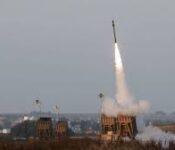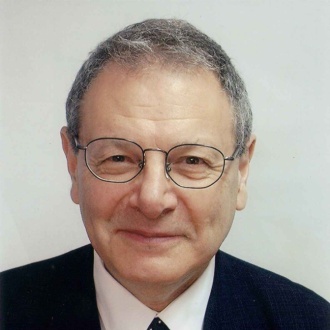Pekudei: Food for Thought for your Dinner Table
Sunday: The Famous Silver
Moses gave a full accounting for every ounce of copper and silver that was donated to the building of the Tabernacle. One Kikar (a measurement of Biblical origin) of silver was used to pour the foundations for the walls The thousand and the seven hundred and seventy-five shekel of silver were used to make hooks for the pillars from which the curtains were hung. The Torah use of the definitive “the,” the thousand and the seven hundred and seventy-five, draws our attention to this particular batch of silver.
The Midrash teaches that Moses was at first unable to account for these shekels and the populace suspected him of deceit, whereas a voice echoed from the heavens, “ the thousand and the seven hundred and seventy-five, that you can’t seem to find, were used to make hooks for the pillars. This might explain why Moses did not proceed with a detailed accounting of the donations of gold. After the heavens vouched for Moses’ integrity the people learned to trust him implicitly and did not ask for an accounting. Kli Yakar
Monday: Remembering Stones
The names of the twelve tribes were inscribed on the precious stones of the high priest’s breastplate. The Torah describes these stones as stones of memory. Rashi explained that the inscription worn by the High Priest served as a constant reminder before G-d of Jewish righteousness.
The Talmud relates that Joseph nearly succumbed to the wiles of his master’s wife, but just as he was about to capitulate he saw a vision of his father’s face, who admonished, “your name is destined to appear on the High Priest’s breastplate, what you are about to do would erase your name from among those of your brothers. Is that what you want?” This story presents an alternate method by which the stones encouraged remembrance. When we realize that our names appear before G-d at all times we remember that our sinful ways are not becoming. Meshech Chochmo
Tuesday: Allegorical Messages
The High Priest’s robe was adorned with little material bulbs shaped like pomegranates and bells of pure gold. Each of these garments contained allegorical messages. The mystics described the Torah as G-d’s garment. The robe is thus seen as a metaphor for Torah. The sages referred to the Mitzvos as pomegranates. Specifically, they wrote, that Jews are filled with Mitzvos as pomegranates are filled with seeds. The golden bells that adorned the bottom of the tunic proclaimed that gold and riches are bestowed by G-d.
The message is thus, Jews who don the tunic of Torah and adorn themselves with Mitzvos, like the seeds of pomegranates, merit the blessing of true prosperity as exemplified by the Golden bells. Divrei Yisroel
Wednesday: Selfless Work
“Moses saw the completed work and behold they had done it as G-d had commanded – so they did it.” The last three words seem superfluous, yet the Torah is precise in every word.
Being tasked with building a Divine edifice was a source of great pride to the nation, yet Moses saw that the builders did not build it for personal edification, but purely for G-d’s sake. Moses knew this because the workers had completed their task in record time and in perfect shape. Such perfection was superhuman; human error is almost inevitable when faced with such intricate and complex designs. Their infallible work could only have been made possible by Divine blessing. When Moses saw that the work was graced with Divine perfection he understood that the workers had built it purely for G-d’s sake and thus merited His blessing.
We now understand the verse in its entirety. “Moses saw the completed work and behold they had done it (precisely) as G-d had commanded.” How did they merit such perfection? “So they did it,” because they performed the work for the sole purpose of fulfilling “G-d’s commandment.” Ktav Sofer
Thursday: A Partnership
The Tabernacle was completed, but the craftsmen could not assemble it. Itamar, Aaron’s youngest son and overseer of the entire building project, attempted to assemble it, but failed. The architects, Betzalel and Ahaliav also tried, but they too failed. Human hands could not assemble the tent that would house G-d for only G-d could fit the infinite into finite dimensions. Finally, G-d instructed Moses to make it appear as if he was raising the tent, but it actually went up by itself.
G-d could have assembled the tent without Moses, but he involved Moses to teach us an important lesson.
The mystics taught that every Mitzvah draws a ray of Divine light from the heavens. In our own way, we each build a tent for G-d every time we perform a Mitzvah. We too are incapable of assembling a Divine tent without Divine assistance and though our actions appear to draw down the Divine light, it is in fact G-d, who stands beside us, as He stood beside Moses, and performs the Mitzvah with us. Every Mitzvah is an act of partnership with G-d. Midrash Tanchumah
Friday: One for All
Moses had a private Tent of Meeting outside of the camp, where G-d would appear to him regularly, yet G-d instructed Moses to assemble the Tabernacle, which would serve as a tent of meeting for the entire nation. This demonstrates that we must never contend ourselves with our own spiritual development and Torah study. Regardless of how spiritual we are, G-d wants us to reach out to others and draw them into His tent; into a life of Torah and Mitzvos. Likutei Sichos
Shabbat: In the Holy of Holies
If entry into the Holy of Holies and gazing upon the Holy Ark was forbidden, who placed the Tablets into the Ark and the cherubs atop the Ark?
According to Ibn Ezra, Moses was actually permitted to enter the Holy of Holies whenever he chose to converse with G-d. Moses, on an ordinary day, was holier than Aaron on Yom Kippur. Accordingly, it was Moses who would enter the Holy of Holies to cover the Ark before the Tabernacle was disassembled in preparation for a journey and it was Moses who would enter the Holy of Holies to remove the cover from the Ark after the Tabernacle was reassembled.
Ibn Izra cites another opinion that Aaron and his sons would enter the Holy of Holies to cover or remove the cover from the Ark, but would simply look the other way to avoid gazing upon the Ark.
This continued so long as the nation journeyed across the desert. Once the Temple was built in Israel, no one entered the Holy of Holies with the exception of the High Priest on Yom Kippur.
Tags: food for thought
























